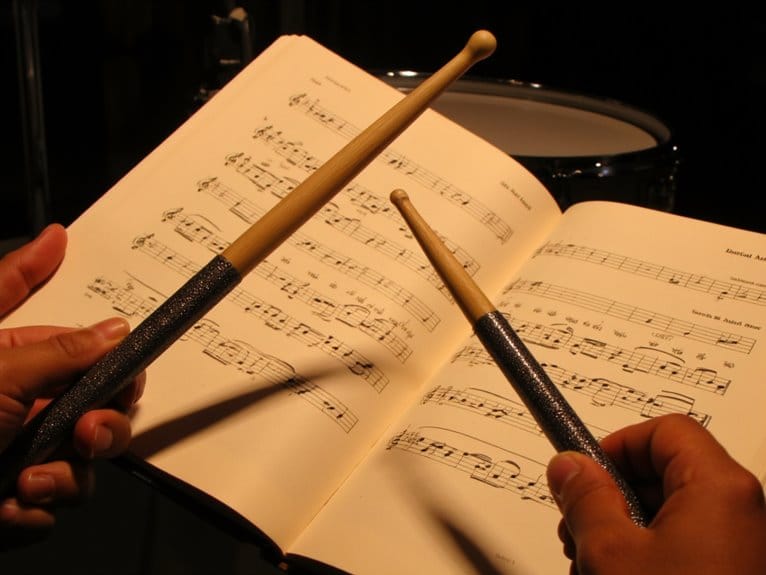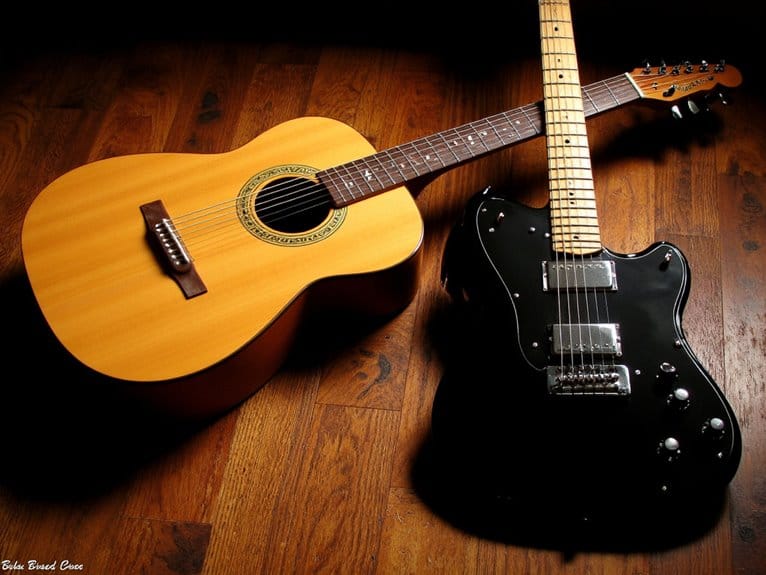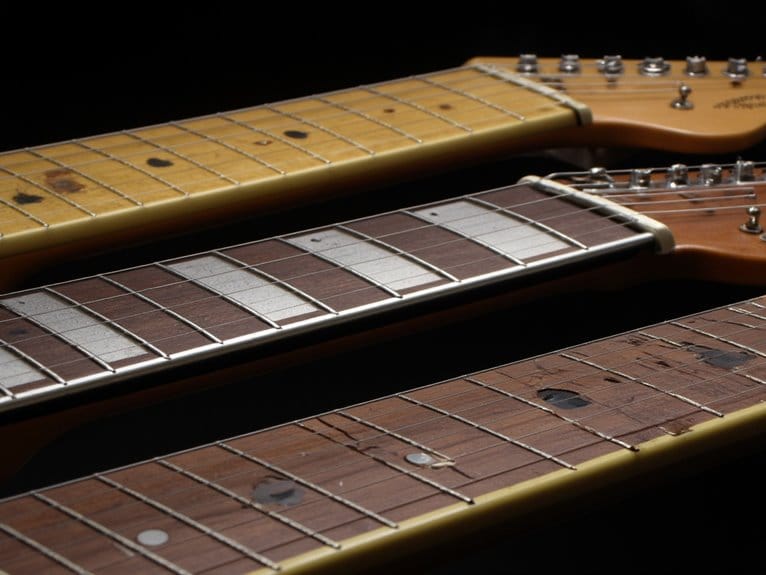What Is the Difference Between a 4 String Banjo and a Mandolin?
The 4-string banjo and mandolin may seem similar at first glance, but don't be fooled – they're distinct instruments with unique characteristics. The banjo boasts a round body, 4 strings tuned to an open G chord, and a more aggressive playing style, producing a bright, punchy tone. In contrast, the mandolin features a teardrop-shaped body, 8 strings tuned in pairs, and intricate fingerpicking techniques, yielding a warm, trebly voice. From physical characteristics to cultural significance, these instruments differ in almost every way. And yet, there's so much more to delve into in their fascinating world of differences.
We are supported by our audience. When you purchase through links on our site, we may earn an affiliate commission, at no extra cost for you. Learn more.
Physical Characteristics Compared
At first glance, the banjo and mandolin may appear to be cousins in the stringed instrument family, but a closer inspection reveals distinct physical characteristics that set them apart, with the banjo boasting a round body and a distinctive neck, while the mandolin sports a teardrop-shaped body and a fretted neck. One notable difference lies in neck width variations, with banjos typically having a wider neck to accommodate thicker strings, whereas mandolins have a narrower neck for easier playability. Additionally, fretboard inlays can be a distinguishing feature, with banjos often featuring intricate inlays, while mandolins tend to have simpler, more subtle designs. These physical differences not only affect the instruments' appearance but also influence their sound and playability.
Number of Strings and Tuning
Beyond their physical disparities, the banjo and mandolin also exhibit distinct differences in their string configurations and tuning systems, which further underscore their unique identities as instruments. The 4-string banjo, with its string priority focused on the lower registers, is typically tuned to an open G chord (G, D, G, B). In contrast, the mandolin boasts 8 strings, tuned in pairs to produce a brighter, more trebly sound (G, D, A, E). This tuning evolution allows the mandolin to cut through the mix, while the banjo's deeper resonance provides a rich, rootsy tone. These differences in string count and tuning not only impact the instruments' sonic profiles but also influence the playing styles and techniques employed by musicians.
Body Shape and Size Differences
We find that the banjo and mandolin bodies, shaped by their unique histories and playing styles, exhibit distinct differences concerning size and silhouette, with the banjo's characteristic round body and long neck contrasting sharply in respect to the mandolin's teardrop or hourglass figure and shorter scale length. The banjo's round body typically measures between 11 and 12 inches in diameter, while the mandolin's body is usually around 8-10 inches in width. Neck width variations are also notable, with banjos often featuring a wider neck (around 1.25-1.5 inches) to accommodate thicker strings, whereas mandolins have narrower necks (around 1-1.25 inches) for faster playing. Body contour differences further distinguish the two instruments, with banjos often having a flat back and mandolins featuring a curved back for improved resonance.
Playing Style and Techniques
Dexterity demands distinct approaches, as the banjo's driving rhythms and melodic phrases require a more aggressive, percussive playing style, whereas the mandolin's fleet-fingered virtuosity is characterized by intricate arpeggios and lightning-fast tremolos. Banjo players often employ a more forceful right-hand emphasis, using the thumb to drive the rhythm and the fingers to add melodic fills. In contrast, mandolinists focus on fingerpicking nuances, using their thumb and index finger to create a smooth, fluid sound. The right-hand emphasis shifts to the fingers, which dance across the fretboard with precision and speed. This fundamental difference in technique requires unique physical adaptations and practice regimens, making each instrument a distinct challenge – and joy – to master.
Sound and Tone Production
As the distinct playing styles and techniques of banjo and mandolin players take shape, the unique sonic fingerprints of each instrument emerge, with the banjo's bright, punchy tone and the mandolin's warm, trebly voice setting them apart in the domain of sound and tone production. The banjo's metal strings and resonator cone produce a crisp, loud sound with prominent midrange frequencies, while the mandolin's double courses of metal strings and body shape yield a more delicate, harmonically-rich tone. Particularly, the banjo's timbre variation is more pronounced, with a greater range of tonal colors available to the player. In contrast, the mandolin's resonance patterns are more focused, resulting in a tighter, more articulate sound. These sonic differences are a key part of what makes each instrument so unique and compelling.
Cultural and Historical Significance
The banjo and mandolin have followed distinct cultural and historical trajectories, with the former emerging from African-American roots in the rural South and the latter tracing its lineage to 18th-century European classical music. The banjo's social roots in folk traditions are evident in its role in African-American music, from blues to bluegrass. In contrast, the mandolin's heritage is steeped in European classical music, with its popularity peaking in the Baroque period. While the banjo is often associated with Appalachian folk, the mandolin is linked to Italian and Celtic traditions. These differing cultural and historical contexts have shaped the instruments' unique sounds, playing styles, and roles in various musical genres. Despite their differences, both instruments share a common thread – their ability to evoke emotion and tell stories through music.






